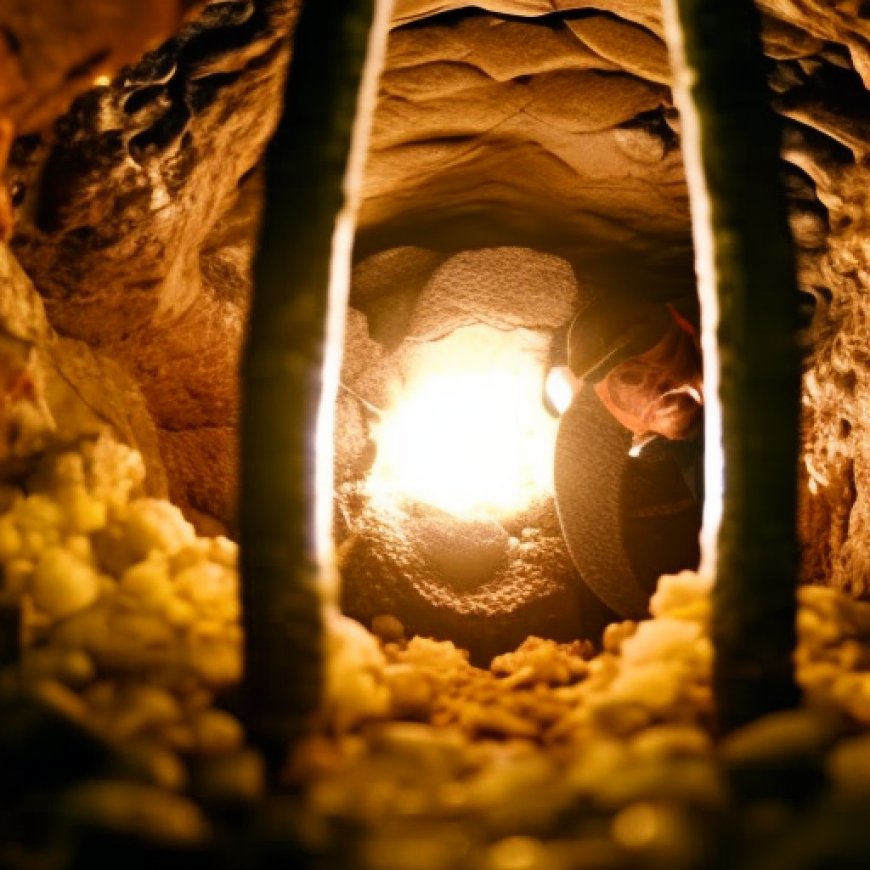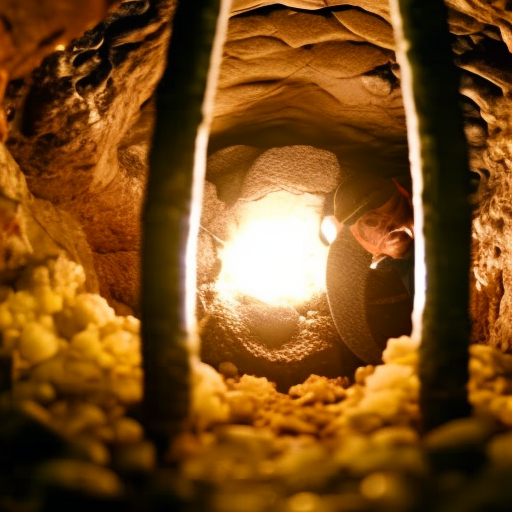A Deep Dive into Compressed Air Energy Storage in Salt Caverns
A Deep Dive into Compressed Air Energy Storage in Salt Caverns EnergyPortal.eu


Exploring the Intricacies of Compressed Air Energy Storage in Salt Caverns: A Comprehensive Analysis
Compressed Air Energy Storage (CAES) in salt caverns is an innovative solution to the challenge of energy storage, offering a promising alternative to traditional methods such as batteries or pumped hydro storage. This technology leverages the unique properties of salt caverns to store energy in the form of compressed air, which can be released to generate electricity when needed.
Sustainable Development Goals (SDGs):
- Goal 7: Affordable and Clean Energy
- Goal 9: Industry, Innovation, and Infrastructure
- Goal 13: Climate Action
The Concept of Compressed Air Energy Storage in Salt Caverns
CAES in salt caverns is not a new concept. It has been around since the 1970s, but recent advancements in technology and an increased focus on renewable energy have brought it back into the spotlight. The basic principle of CAES is simple: when electricity demand is low, excess energy is used to compress air and store it in underground salt caverns. When demand is high, the stored air is released, heated, and expanded in a turbine to generate electricity.
The Advantages of Salt Caverns for Energy Storage
Salt caverns are ideal for this type of energy storage for several reasons. Firstly, they are incredibly large, capable of storing massive amounts of compressed air. Secondly, they are naturally occurring and widespread, particularly in regions like the U.S. Gulf Coast, which has a large concentration of salt domes. Lastly, salt caverns are impermeable, meaning they can effectively contain the compressed air without leakage.
Challenges and Solutions
Heat Management: One of the primary concerns is the heat generated during the compression process. This heat must be managed effectively to prevent damage to the equipment and ensure efficient operation. Traditionally, this heat is vented away, but this results in a loss of energy. Modern CAES systems aim to capture and store this heat, using it to increase the efficiency of the expansion process.
Environmental Impact: While CAES in salt caverns is generally considered environmentally friendly, there are potential risks. For instance, the creation of the caverns requires large amounts of water, which can lead to water scarcity in certain regions. Additionally, if not properly managed, the compressed air can escape, leading to greenhouse gas emissions.
The Benefits of CAES in Salt Caverns
Despite these challenges, the potential benefits of CAES in salt caverns are significant. This technology offers a cost-effective and scalable solution for energy storage, which is crucial for the integration of renewable energy sources into the grid. Unlike batteries, which degrade over time, salt caverns can store energy indefinitely without loss of capacity. Furthermore, CAES systems can respond quickly to changes in electricity demand, making them an effective tool for grid stability.
Sustainable Development Goals (SDGs):
- Goal 7: Affordable and Clean Energy
- Goal 9: Industry, Innovation, and Infrastructure
- Goal 13: Climate Action
Conclusion
In conclusion, Compressed Air Energy Storage in salt caverns represents a promising avenue for large-scale, long-duration energy storage. It combines the natural advantages of salt caverns with advanced engineering techniques to provide a solution that is both efficient and environmentally friendly. While there are challenges to overcome, the potential benefits make it a technology worth pursuing. As we continue to transition towards a more sustainable energy future, CAES in salt caverns will undoubtedly play a crucial role.
SDGs, Targets, and Indicators in the Article
-
SDGs Addressed or Connected to the Issues
- SDG 7: Affordable and Clean Energy
- SDG 9: Industry, Innovation, and Infrastructure
- SDG 13: Climate Action
-
Specific Targets Based on the Article’s Content
- SDG 7.2: Increase substantially the share of renewable energy in the global energy mix
- SDG 9.4: Upgrade infrastructure and retrofit industries to make them sustainable
- SDG 13.2: Integrate climate change measures into national policies, strategies, and planning
-
Indicators Mentioned or Implied in the Article
- Percentage of renewable energy in the global energy mix
- Investment in upgrading infrastructure and retrofitting industries
- Inclusion of climate change measures in national policies and planning
Table: SDGs, Targets, and Indicators
| SDGs | Targets | Indicators |
|---|---|---|
| SDG 7: Affordable and Clean Energy | Increase substantially the share of renewable energy in the global energy mix (SDG 7.2) | Percentage of renewable energy in the global energy mix |
| SDG 9: Industry, Innovation, and Infrastructure | Upgrade infrastructure and retrofit industries to make them sustainable (SDG 9.4) | Investment in upgrading infrastructure and retrofitting industries |
| SDG 13: Climate Action | Integrate climate change measures into national policies, strategies, and planning (SDG 13.2) | Inclusion of climate change measures in national policies and planning |
Analysis:
SDGs Addressed or Connected to the Issues
The issues highlighted in the article are connected to multiple Sustainable Development Goals (SDGs). Firstly, SDG 7: Affordable and Clean Energy is addressed as Compressed Air Energy Storage (CAES) in salt caverns offers a promising alternative for energy storage, contributing to the goal of affordable and clean energy. Secondly, SDG 9: Industry, Innovation, and Infrastructure is connected as CAES requires advanced engineering techniques and infrastructure upgrades to make it a viable solution. Lastly, SDG 13: Climate Action is relevant as CAES helps integrate renewable energy sources into the grid, reducing greenhouse gas emissions and supporting climate change mitigation.
Specific Targets Based on the Article’s Content
The article’s content suggests specific targets under the identified SDGs. Under SDG 7, the target is to increase substantially the share of renewable energy in the global energy mix (SDG 7.2). This target aligns with the use of CAES in salt caverns as a renewable energy storage solution. Under SDG 9, the target is to upgrade infrastructure and retrofit industries to make them sustainable (SDG 9.4). This target is relevant as CAES requires infrastructure upgrades and advanced engineering techniques. Under SDG 13, the target is to integrate climate change measures into national policies, strategies, and planning (SDG 13.2). This target is connected to the need for incorporating CAES and other renewable energy storage solutions into national energy policies and planning.
Indicators Mentioned or Implied in the Article
The article mentions or implies indicators that can be used to measure progress towards the identified targets. The first indicator is the percentage of renewable energy in the global energy mix, which can be used to track progress towards SDG 7.2. This indicator reflects the adoption and integration of CAES and other renewable energy sources into the global energy mix. The second indicator is investment in upgrading infrastructure and retrofitting industries, which can be used to monitor progress towards SDG 9.4. This indicator reflects the commitment and financial resources allocated to improving infrastructure for energy storage solutions like CAES. The third indicator is the inclusion of climate change measures in national policies and planning, which can be used to assess progress towards SDG 13.2. This indicator reflects the integration of CAES and other climate-friendly technologies into national strategies and planning processes.
Behold! This splendid article springs forth from the wellspring of knowledge, shaped by a wondrous proprietary AI technology that delved into a vast ocean of data, illuminating the path towards the Sustainable Development Goals. Remember that all rights are reserved by SDG Investors LLC, empowering us to champion progress together.
Source: energyportal.eu

Join us, as fellow seekers of change, on a transformative journey at https://sdgtalks.ai/welcome, where you can become a member and actively contribute to shaping a brighter future.







